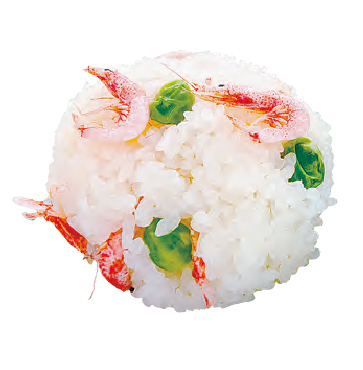Saitama – Komatsuna Musubi
Using premium rice varieties like “Irodori no Kizuna” and “Irodori no Kagayaki,” this dish incorporates locally produced komatsuna (Japanese mustard spinach), which is celebrated as the top crop in Saitama.
Mixed with seasonal vegetables and chicken in a hearty “Kate Meshi” dish, the onigiri is wrapped in crisp, vivid green komatsuna leaves that boost both flavor and visual appeal.
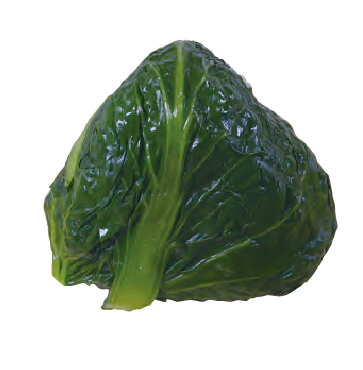
Chiba – Turban Shell with Shiso Onigiri
Chiba’s early-harvest “Fusaotome” rice, known for its large, fluffy grains and excellent flavor, is paired with a time-honored local treasure—the turban shell (sazae).
Wrapped with shiso leaves preserved in salt for a refreshing burst of flavor, this onigiri combines the deep umami (fifth category of taste, corresponding to the flavour of glutamates) of the turban shell with the tang and spice of kimchi, creating an unforgettable taste experience.
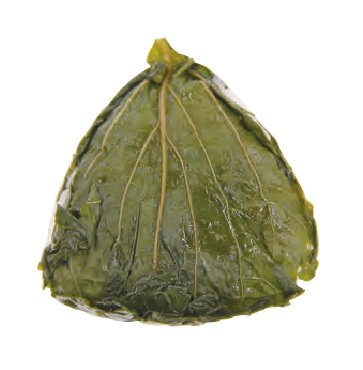
Tokyo – Norabō-na Musubi
Honoring Tokyo’s rich vegetable heritage, this onigiri features “Norabō-na,” a traditional leafy green from the Edo-Tokyo lineage.
Prepared in the spring when its stems are at peak sweetness, the dish pairs crisp Norabō-na with tender pork and carrots, accented by a savory salted kombu that ties the flavors together.
This is a true taste of Tokyo’s culinary history.
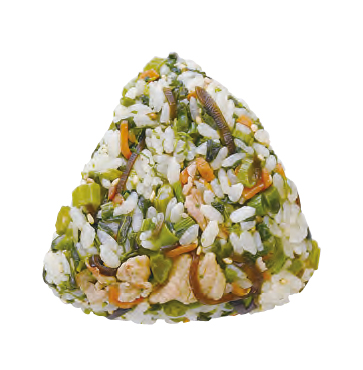
Kanagawa – Oninan Onigiri
A traditional onigiri with a historical twist—legend has it that during the Kamakura period, a high-ranking monk consumed this rice ball to avert impending danger.
Made with “Harumi” rice, named after the image of a “clear sea,” its glossy texture and rich sweetness perfectly complement the ume, shiso, and sesame fillings, making it a symbol of safety and well-being.
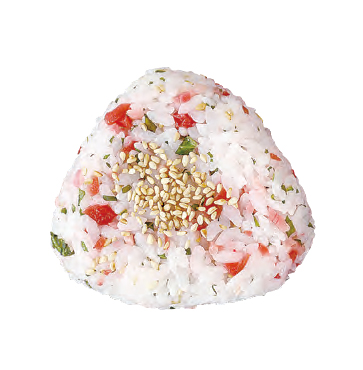
Yamanashi – Wild Vegetable Onigiri
Yamanashi’s “Nihokubei” rice, cultivated in mineral-rich water and fertile soil under long sunlight and significant temperature variations, boasts an outstanding taste.
Mixed with an assortment of wild mountain vegetables, this onigiri offers a burst of earthy aroma, a slight bitterness from the greens, and the inherent sweetness of the rice—a delightful combination that awakens the appetite.
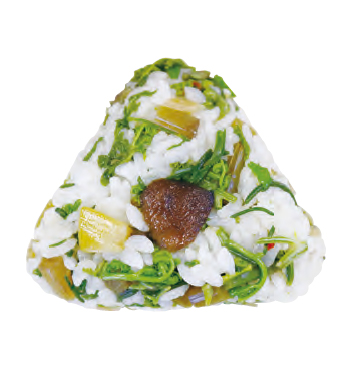
Nagano – Dry Apple Tea Time Onigiri
Prepared with the original “Kaze Sayaka” rice, known for its perfect balance of chewiness and mild sweetness, this onigiri is reimagined as a dessert.
Coated with locally grown apples, cheese, and green peas, and then sliced dry apples arranged on top like a charming hat, this creation offers a unique blend of tangy, creamy, and subtly sweet flavors.

Niigata – Salted Onigiri
Celebrating Niigata’s reputation as Japan’s rice capital, this onigiri is made with Koshihikari rice nurtured by pristine water from the majestic valleys near Mount Tanigawa and the clear streams of the Shinano and Uonogawa rivers.
Lightly seasoned with traditional sea salt to enhance the natural sweetness and flavor of the rice, it epitomizes the simple yet exquisite philosophy that “simple is best.”
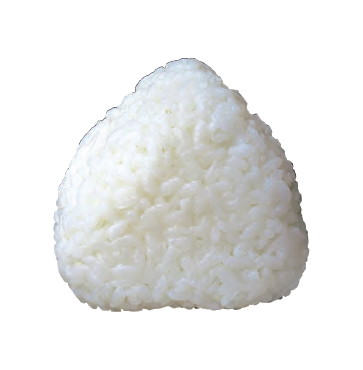
Toyama – Grated Kelp Onigiri
Using a new Toyama rice variety launched in 2018—renowned for its exceptional flavor and sweetness that remains delicious even when cooled—this onigiri is wrapped in grated kelp. The name reflects the wish to bring a smile to anyone who tastes it.
The addition of a tangy ume filling inside further stimulates the appetite, making this dish a standout.
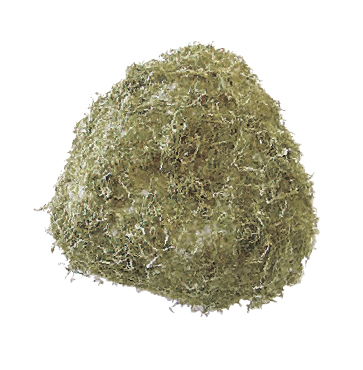
Ishikawa – Nanameshi Onigiri
Ishikawa’s new rice variety, “Hyakuman Goku,” is celebrated for its large grains and satisfying texture, making it ideal for onigiri.
Filled with “Nakajima-na,” a traditional local vegetable recognized as a World Agricultural Heritage, this dish delivers a unique blend of spicy, aromatic, and slightly pungent flavors that perfectly complement the rice.
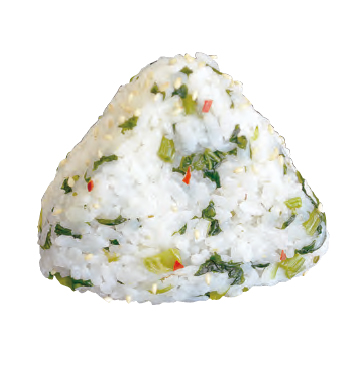
Fukui – Momi Wakame Onigiri
Fukui offers its own signature rice called “Ichihomare,” developed to surpass even the renowned Koshihikari.
This onigiri features plenty of momi wakame—sun-dried, shredded seaweed harvested near Tojinbo.
With each bite, you’ll experience the refreshing aroma of the ocean, the gentle saltiness, and the irresistible umami flavor that remains delightful even when the onigiri cools.
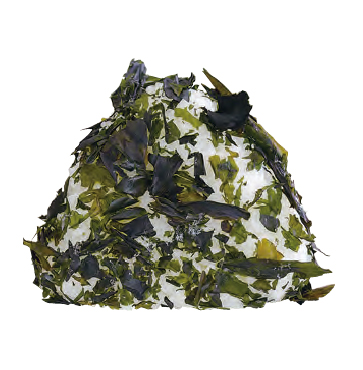
Gifu – Hida Tomato and Tuna Onigiri
Made with the highly acclaimed “Hida Koshihikari” rice—grown using pristine water from the Northern Alps and the Shirakawa mountains—each grain boasts a distinct stickiness and fluffiness.
Paired with Hida tomatoes, known for their perfect balance of sweetness and acidity, and complemented by savory tuna, this onigiri offers an exceptional flavor profile that highlights Gifu’s natural abundance.
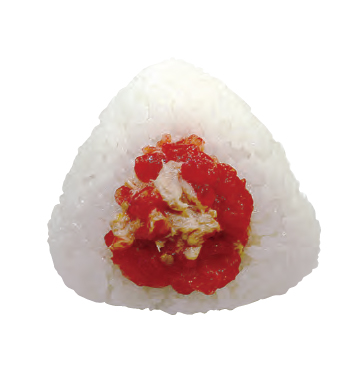
Shizuoka – Sakura Ebi Onigiri
In Shizuoka, where the sea offers its treasures, this onigiri stars sakura ebi (small, flavorful shrimp).
The rice is cooked with fresh sakura ebi, which not only infuses the dish with a delightful, aromatic broth but also provides beautiful color.
Prepared with “Shimizu no Kaze Koshihikari”—renowned for its sticky, glossy texture and sweet aroma—this onigiri remains delicious even when served cold, perfectly marrying land and sea.
